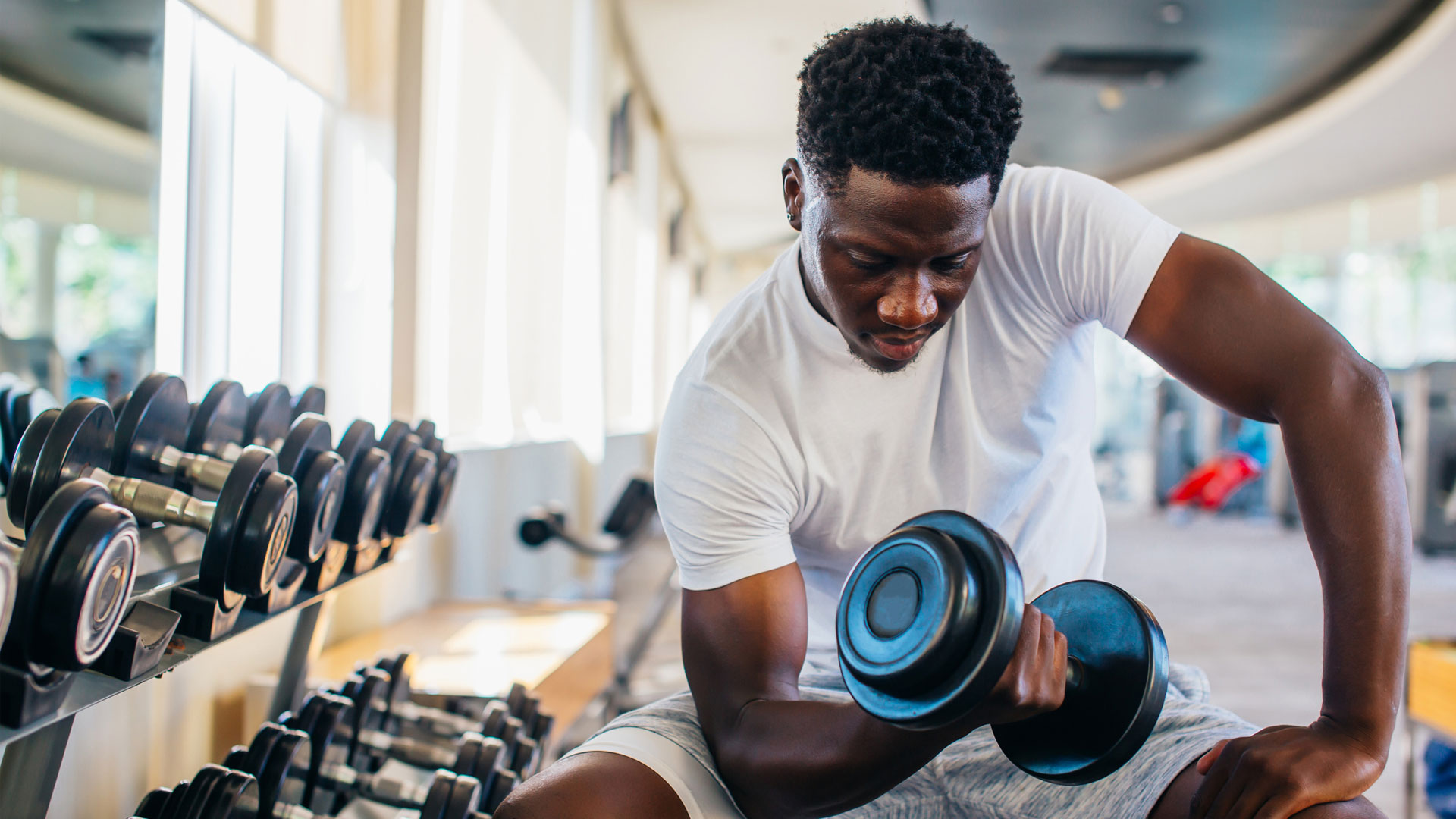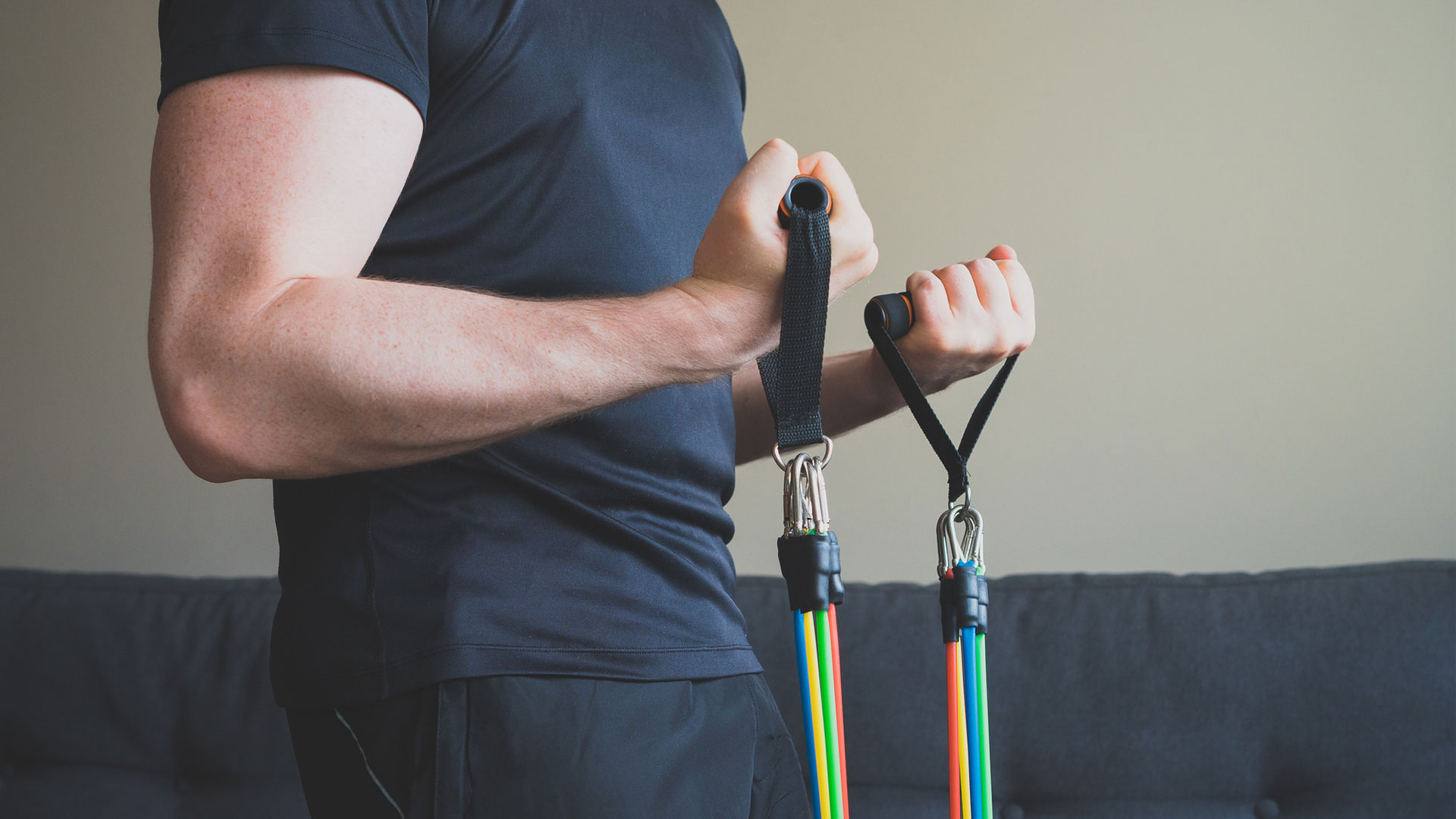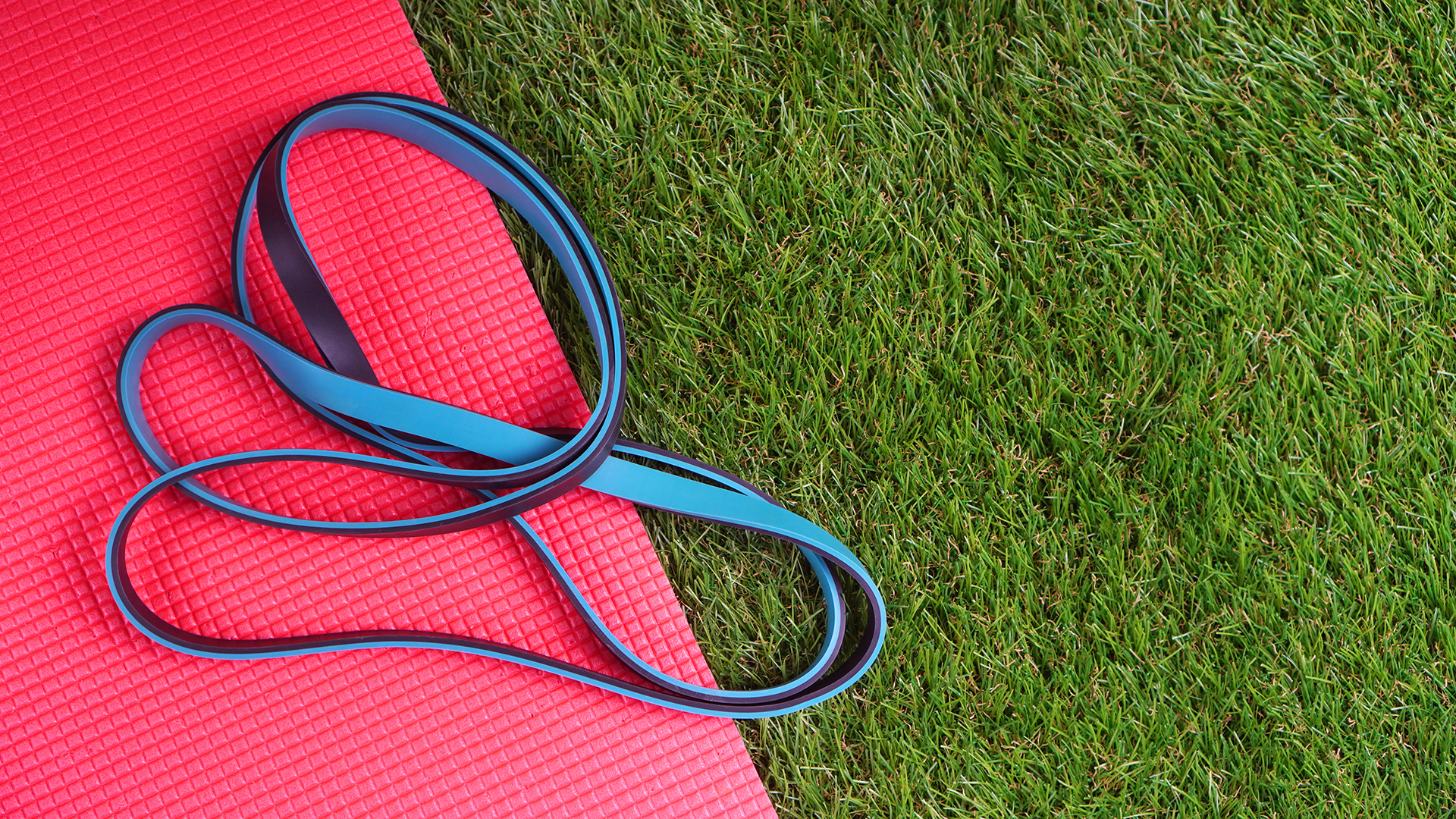Resistance bands vs weights: Which gives you a better workout?

No matter whether you use resistance bands or weights, resistance training of any kind is incredibly beneficial for your physical health. In fact, it’s one of the most effective ways to keep your muscles, bones and joints strong and healthy.
The US Department of Health recommends doing muscle-strengthening activities at least two days per week, and they list many forms of resistance training: "lifting weights, working with resistance bands, doing calisthenics that use body weight for resistance (such as push-ups, pull-ups, and planks)".
Although they often seem simple, exercises such as push-ups, pull-ups and planks can be some of the most difficult to perform with the correct form. But if you're looking to increase the intensity of your workouts, and you're wondering whether to use some of the best resistance bands, or weights to strengthen your muscles, you've come to the right place. Below, we take a look at the differences between resistance bands and weights training to help you work out which is best for you.
Resistance bands vs weights: Strength-building
Building strength is important for healthy and capable muscles, bones, and joints. Resistance training, both using weights and resistance bands, puts your body under a greater amount of force when you exercise, working your muscles harder than when using just your body weight.
When weight training, you can add a precise amount of weight every session by increasing the weight of your kettlebell or barbell or increasing the weight on your adjustable dumbbells. One of the positives of lifting weights over resistance bands is that it's easier to increase this load slowly, to ensure you're not overloading your muscles and doing too much too soon.

That said, resistance bands can provide progressive loads to the body too. With bands, how ‘heavy’ it feels changes as you stretch it, just like an elastic band. There are also many different resistance levels with bands, from light to XX-heavy.
Both weights and resistance bands can make you stronger, though weights allow more discreet increases and have a much, much higher total resistance.
Get instant access to breaking news, the hottest reviews, great deals and helpful tips.
Resistance bands vs weights: Cost
Weights are valued by the pound (lb), so more weight costs more money. New, high-quality, iron-weight plates will cost between $1.50 - $2.50 per lb of weight - that’s about $100 for one pair of 25lb plates.
Meanwhile, a well-made, resilient barbell will cost around $200 (any less and there could be potential concerns over quality). Adjustable dumbbells are between $1.75 - $4 per lb, that’s $50 for a single pair of 10lb dumbbells. Kettlebells cost $1.25 - $3.25 per lb, $50 for a single 25lb kettlebell.
As you've probably noticed if you've started shopping for a range of free weights, they don't come cheap, and you'll need space to store them.

Resistance bands are much more affordable. A selection of four bands that range from 15lb to 65lb of resistance costs under $50 in total. That’s less than a single pair of 10lb dumbbells, and will give you far more weight options. That said, resistance bands do have a much lower weight limit, with even the heaviest bands topping out at around 200lb.
When it comes to cost, resistance bands provide far more value for money within a given budget, and below a certain resistance threshold.
Resistance bands vs weights: Portability
Resistance bands are far more portable than weights for taking with you to and from the gym. A resistance band that reaches 30lb of resistance weighs less than 6 ounces and can fold up to fit in a pocket.
Because of how light they are, shipping costs are virtually non-existent when purchasing resistance bands, whereas with weights, you can expect the shipping costs to be about 10% of the price of the equipment itself.

One of the most important aspects of a resistance training program is consistency, and many people find that vacations, long office hours, or big life events such as moving house completely knock them out of their routine. One of the great things about resistance bands is that you can bring them anywhere.
It’s also worth mentioning that if you’re using weights at home, you’ll need to make sure the floor can handle any dropped weights, whether on purpose or by accident. Resistance bands don’t such issues.
Should you buy resistance bands or weights?
If you want to be as strong as possible and you have the budget and time to join a fully-equipped gym (or build your own home gym) then weights are definitely the most effective option and will give you the best workout. However, if you’re working with a tighter budget, then resistance bands will give you much more bang for your buck up to a certain resistance level. If you would like to have equipment that you can bring to a park, hotel, or office, then resistance bands are the way to go.
If you’re just getting into resistance training, and aren’t sure if it’s something you’re going to be able to do regularly, there’s no point investing heavily in weights, so get a few inexpensive resistance bands to start.
Ultimately, whether you should buy resistance bands or weights will depend on your goal, your budget, your environment, and your current level of strength and fitness. For most people, starting with resistance bands is a great idea.
Here are the best resistance bands to shop right now, as well as the best resistance band workouts for leg day, and how to squat and deadlift with a resistance band.
Will McAuley is a London-based Personal Trainer and Nutrition Coach who’s writing has appeared in Men’s Fitness and GQ magazine, covering exercise, nutrition and health. He has a Master’s degree in Strength & Conditioning from Middlesex University in London, is a published scientific author in the Journal of Strength and Conditioning Research, and holds a Bachelor’s degree in Linguistics from Trinity College Dublin.

